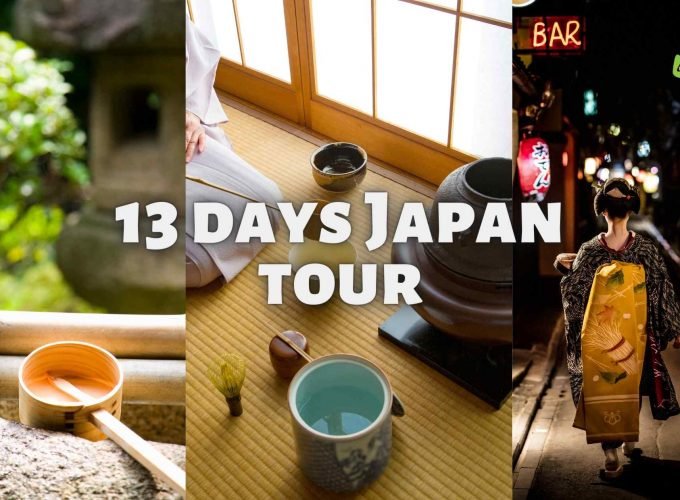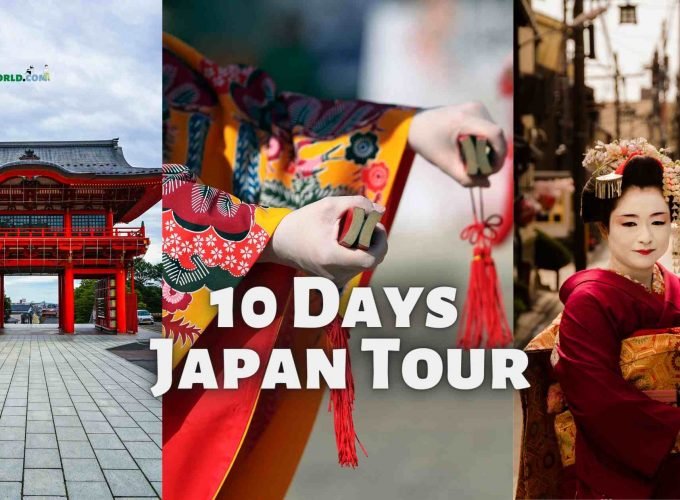About Tenryū-ji Temple
Arashiyama is a neighborhood in Kyoto, Japan, that is home to the Tenryu-ji Temple, which is a Zen temple. It is included on the list of Kyoto locations that are part of the UNESCO World Heritage Sites and is widely regarded as one of the most significant historical and cultural landmarks in the city.
The Tenryu-ji Temple is the head temple of the Tenryu branch of Rinzai Zen. It was established in the 14th century by the emperor Go-Daigo and is located in Kyoto, Japan. The temple is well-known for its stunning gardens, one of which is a pond garden that is widely regarded as among the most outstanding examples of traditional Japanese landscaping.
Tenryu-ji Temple is well recognized not just for its gardens but also for its architecture and art. The temple’s main hall is filled with elaborate wood carvings, murals, and paintings and is considered to be one of the largest wooden structures in Japan. The temple is also home to a number of significant cultural relics, such as a statue from the 11th century depicting the Buddhist deity Shaka and a collection of scrolls and calligraphy from the 14th century.
When they go to Tenryu-ji Temple, guests have the option of wandering around the grounds and buildings, participating in a Zen meditation session, or simply appreciating the calm and serene environment of the temple. Everyone who goes to the Arashiyama neighborhood of Kyoto should make a point of going to the Tenryu-ji Temple, regardless of whether they are more interested in the historical, cultural, or spiritual aspects of this important historical monument.
Hisotry of Tenryū-ji Temple
The Tenryu-ji Temple was established in the 14th century, when Japan was still in the Nanbokucho period of its history. During a period of political upheaval and civil conflict, Emperor Go-Daigo decided to construct it as a means of solidifying his power. He did this by creating this organization.
In the late 14th century, the Tenryu-ji Temple was moved from its previous location to its current location in the Arashiyama neighborhood of Kyoto. The temple’s former location was not in the Arashiyama neighborhood. Many of the temple’s buildings were lost to fires and other natural calamities over the course of several centuries, and it was frequently demolished and reconstructed after it was damaged.
The Tenryu-ji Temple went through a significant reconstruction and restoration project in the latter half of the 19th century and the early 20th century. As a result, a significant portion of the temple’s current architecture and landscaping goes back to this time period. Today, the Tenryu-ji Temple is recognized as being among the most significant historical and cultural landmarks in Kyoto. It is also recognized as being among the most popular tourist locations in the city.
Tenryu-ji Temple is an excellent place to start your exploration of Kyoto’s rich cultural heritage. Whether you are interested in the history of Buddhism in Japan, the evolution of Japanese architecture and design, or simply looking to experience the tranquil and peaceful atmosphere of a traditional Zen temple, Tenryu-ji Temple is an excellent location to begin your journey.
How to reach Tenryū-ji Temple
The Tenryu-ji Temple may be reached quickly and conveniently by both public transit and taxi in the Arashiyama neighborhood of Kyoto, which is located in Japan. The following is a list of directions that will lead you to the temple:
- By Train: Getting to Tenryu-ji Temple is a breeze if you take the JR Sagano Line all the way to the Saga-Arashiyama Station. This is the most direct route. The temple can be reached on foot in about ten minutes from there.
- By Bus: An additional choice for getting to the Arashiyama region is to take either city bus number 28 or 59 from Kyoto Station. After alighting at the “Arashiyama” bus stop, the temple may be reached on foot in just five minutes.
- Taxi: If you want an option that is even more convenient, you can take a taxi from Kyoto Station to Tenryu-ji Temple. This is one of the options. This trip should take roughly twenty to thirty minutes, giving or taking into account the amount of traffic.
It is essential to plan your trip in advance and allot sufficient time in your budget for travel as well as touring the temple itself, regardless of the mode of transportation you choose to choose. In addition, visitors are strongly recommended to check the temple’s website or make direct contact with the temple in order to obtain the latest and most correct information regarding the conditions, opening hours, and entry rates.
Do's and Dont's at Tenryū-ji Temple
ensure that you have a respectful and enjoyable experience. Here are some dos and don’ts to keep in mind:
Do’s:
- Do remove your shoes before entering the temple buildings.
- Do dress modestly, covering your shoulders and knees.
- Do be quiet and respectful while inside the temple buildings and grounds.
- Do observe any signs or instructions from temple staff.
- Do be mindful of your surroundings and avoid disturbing the peace and tranquility of the temple.
Don’ts:
- Don’t take photographs inside the temple buildings without permission.
- Don’t touch or climb on the temple structures or artifacts.
- Don’t smoke or eat inside the temple buildings or grounds.
- Don’t make loud noises or engage in any other disruptive behavior.
- Don’t leave litter or damage the temple in any way.
By following these simple guidelines, you can help ensure that your visit to Tenryū-ji Temple is a respectful and enjoyable experience for both yourself and others.
Highlights of Tenryū-ji Temple
Tenryū-ji Temple is considered one of Kyoto’s most important cultural and historical relics, and is recognized for its gorgeous architecture, calm gardens, and rich history. The following is a list of some of the most memorable aspects of a trip to the temple:
- Zen Garden: The breathtaking Zen garden of Tenryu-ji Temple is one of the most well-known aspects of the temple and is widely regarded as one of the most impressive examples of its sort anywhere in Japan. The garden is laid out in such a way that it can only be appreciated from a single vantage point. It is comprised of a collection of rocks, sand, and trees that are intended to be symbolic of the stunning natural beauty of the area.
- Main Hall: The Tenryu-ji Temple is known for a number of things, one of which is its main hall, which is regarded as being one of the most impressive specimens of traditional Japanese temple architecture in all of Kyoto. The hall is home to a stunning statue of the historical Buddha, and guests are encouraged to enter and experience the hall’s calm and quiet ambiance for themselves.
- Paintings and Artifacts: Tenryu-ji Temple is particularly well-known for its collection of paintings and antiques, many of which date back to the 14th century. Many of these paintings and items may be found in the temple’s main hall. Visitors get the opportunity to explore a vast collection of Buddhist artwork and manuscripts. This collection features scrolls, statues, and other objects that are regarded as some of the most outstanding examples of Japanese religious art.
- Surrounding Landscape: Tenryu-ji Temple is surrounded by a lovely terrain that consists of forests, hills, and rivers, and visitors are urged to tour the temple grounds and take in the beauty while they are there. Tenryu-ji Temple is a wonderful site to begin your exploration of Kyoto’s natural splendor, whether your goal is to find a tranquil setting in which to meditate or simply to take in the city’s stunning scenery.
Tenryu-ji Temple is an absolute must-see if you find yourself in Kyoto. It doesn’t matter if you’re a history buff, an art enthusiast, or simply searching for a calm getaway from the hustle and bustle of modern life; you won’t be disappointed. The temple is sure to leave a long-lasting impression on visitors of all ages and walks of life due to its extensive history, stunning architecture, and peaceful surroundings.
Also read – Important to know about Arashiyama monkey park iwatayama






Comment (0)